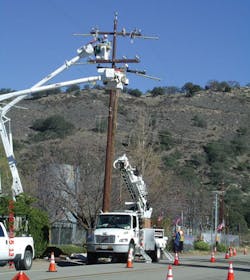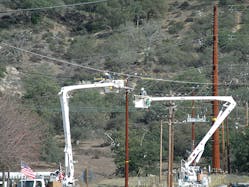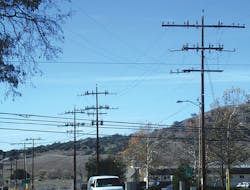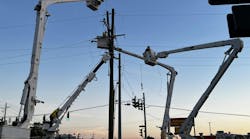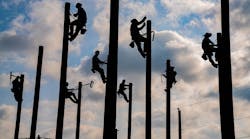Within a five-year time frame, two different wildfires scorched infrastructure in San Diego Gas & Electric’s (SDG&E’s) service territory and inflicted widespread damage. In 2003, wildfires consumed 280,000 acres, and just four years later, another set of wildfires destroyed an additional 368,000 acres. During these severe-weather events, high-pressure systems spun in a clockwise fashion over the four corners region of the United States. Santa Ana winds cascaded down the mountains and into San Diego, California, and by the time they reached the coast, the winds increased to 70 mph or 80 mph. Combined with soaring temperatures, these weather conditions packed a powerful punch to San Diego and the nearby areas. Following these two wildfire events, SDG&E moved to create a company-wide Community Fire Safety Program, which included a wide array of initiatives to address fire safety. These initiatives ranged from the evaluation and hardening of overhead electric facilities in areas known for higher winds and vegetation to the creation of its own weather network. SDG&E also began a detailed inspection and trim cycle under vegetation management, formed a fire awareness and response team comprised of seasoned fire professionals, and developed a public outreach and education program for all customers.Taking a Proactive ApproachSince 2007, SDG&E has taken a proactive approach to fire prevention and mitigation by implementing various new initiatives and operational methods. The utility hired seasoned firefighting professionals and meteorologists who could provide real-time awareness of the fire danger on a day-by-day and hour-by-hour basis. They also could work with customer service teams to reach out to the public and provide education and awareness on the fire danger and how to mitigate it.SDG&E also expanded and strengthened its vegetation management program by creating a detailed inspection and trim program that currently covers more than half a million trees within its service territory. By cutting and trimming trees on a regular basis, SDG&E has taken more of a proactive, rather than a reactive, approach to the dangers of vegetation as it relates to the overhead electric system. Finally, SDG&E began looking at the transmission and distribution system to determine how to harden the infrastructure to withstand wildfires. Because winds can blow upwards of 100 mph in some areas of the San Diego area, SDG&E keeps watchful eye on the weather and its effect on its system through the use of a utility-operated weather network. This network of more than 170 weather stations provide SDG&E meteorologists with up-to-date weather information on a 24/7 basis in 10-minute intervals, thereby allowing SDG&E to make critical decisions on the overall safety of its system on a real-time basis and to act accordingly.
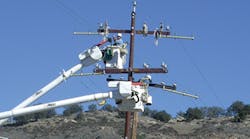
Voice your opinion!
Voice your opinion!
To join the conversation, and become an exclusive member of T&D World, create an account today!
Latest from Electric Utility Operations
Latest from Electric Utility Operations
